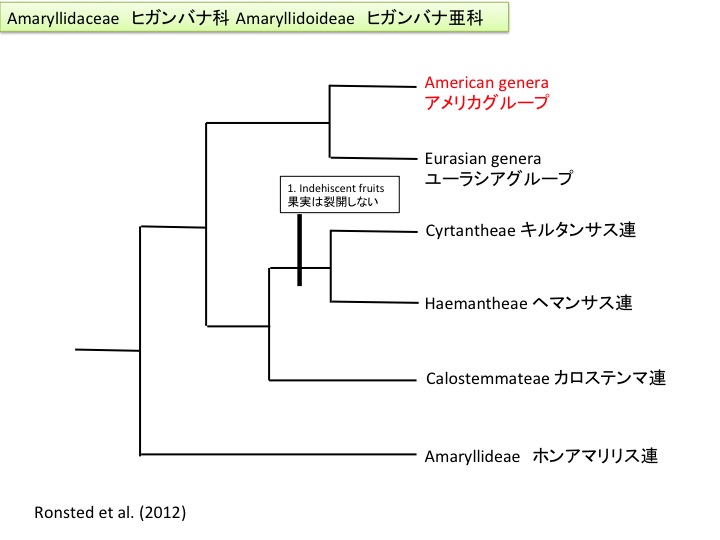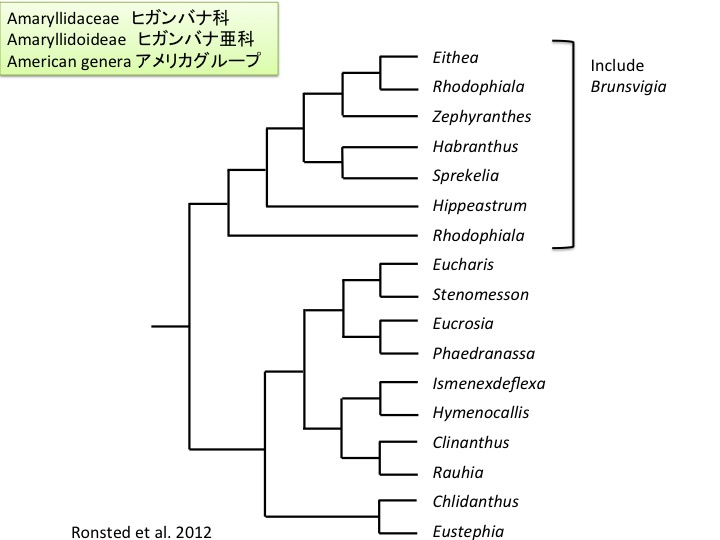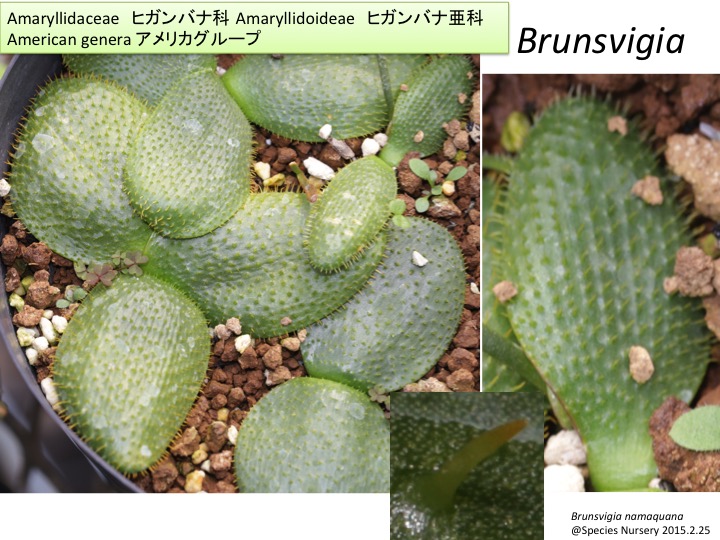Brunsvigia属は南アフリカに分布する約20種からなり(Meerow and Snijiman 1998)、Hippeastrumと同じcladeに属する(Stevens onward)。Brunsvigia namaquanaでは、棘が葉脈と平行にほぼ等間隔に並んでいる。この並び方は単子葉植物の気孔の並び方に似ている。単子葉類の気孔形成機構はよくわかっておらず、双子葉とは異なった気孔の配列だけに新しい機構の発見があるかもしれない。トウモロコシのbulliform細胞は表皮細胞で周辺細胞よりも大きく、乾燥すると収縮して葉を折りたたむ役割をしている。Bulliform細胞も気孔のように葉脈に平行に分布するが、双子葉植物のトライコームや根毛形成に関与するHD-ZIPIV遺伝子がBulliform細胞の正常な分布に必要であることがわかり、双子葉植物と同じ因子を使っている可能性もある(総説としてRobinson and Roeder 2015)。棘の分布様式に加えて、棘の形成機構もよくわかっておらず、今後の研究課題である。
Approximately 20 species are distributed in South Africa (Meerow and Snijman 1998). Many spines are formed along leaf veins on an adaxial surface of Brunsvigia namaquana. This distributed pattern is similar to the linear arrangement of stomata in other monocots including maize. Although the regulatory mechanism of monocot stomata distribution is not welll known, bulliform cells that is bubble-like cells to deflate under dry conditions to bind a leaf are hypothesized to be regulated by similar components to trichome and root hair are (Robinson and Roeder 2015). As well as the distribution, morphogenesis of a spine is another interesting issue.
Meerow, A.W. and Snijman, D.A. 1998. Amaryllidaceae. In Kubitzki, K. The Families and Genera of Vascular Plants. III Flowering Plants Monocotyledons Lilianae (except Orchidaceae). Pp. 83-110
Robinson, D.O. and Roeder, A.HK. 2015. Themes and variations in cell type patterning in the plant epidermis. Curr. Opin. Genet. Dev. 32: 55-65.



